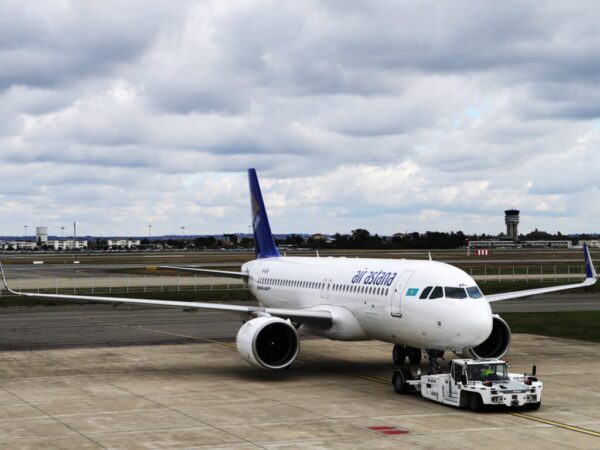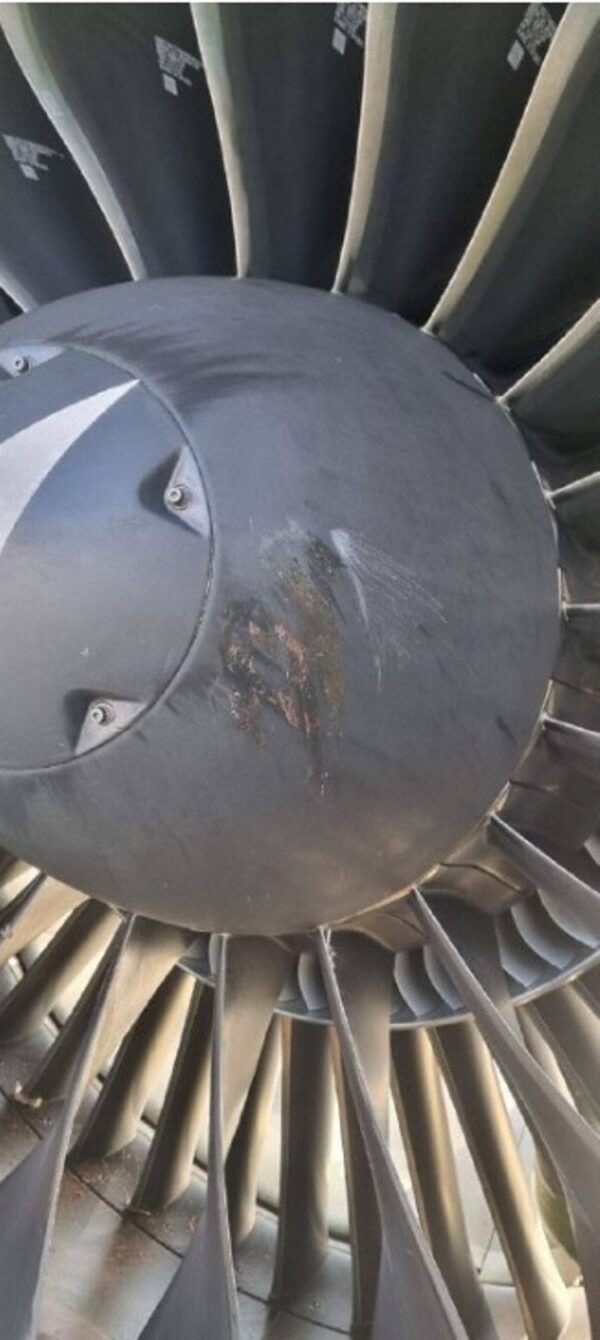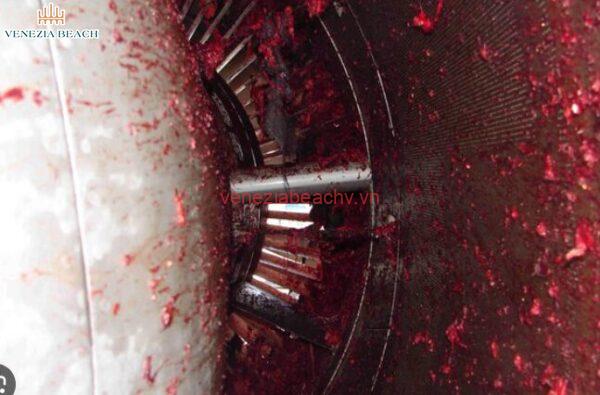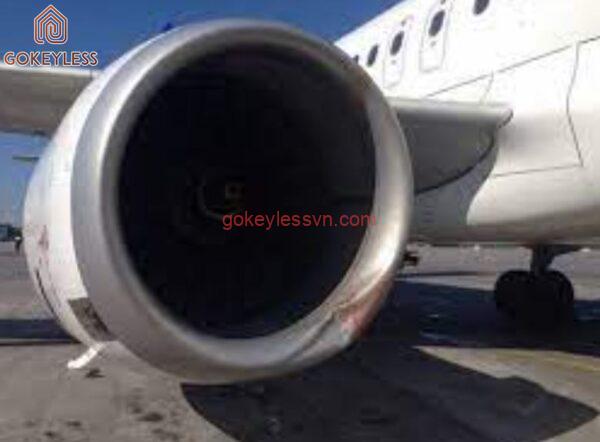Air Astana Engine Incident: A Comprehensive Analysis Of The Events And Cctv Investigation

The Air Astana engine incidents in 2004 and 2015 were significant events that highlighted the importance of aviation safety. These incidents involved critical malfunctions on Embraer E190 aircraft, leading to severe control issues and pushing the planes beyond their design limits. This article delves into the role of CCTV footage in investigating these incidents, shedding light on the maintenance errors and the subsequent concerns regarding global airline maintenance and quality control procedures. Join us at Vinhquanggroup as we analyze these incidents, explore media coverage, and extract valuable lessons for enhancing aviation safety protocols.

I. Air Astana Engine Incident in 2004
The Air Astana engine incident in 2004 was a significant event that raised concerns about aviation safety. It involved an Embraer E190 aircraft experiencing a critical malfunction due to maintenance errors. The incident occurred during a flight, where the control issues arose as a result of incorrect installation of aileron cables. This crucial mistake caused the plane to respond opposite to the pilot’s inputs, leading to extreme maneuvers and pushing the aircraft beyond its intended limits. The pilots’ skill and problem-solving abilities played a vital role in landing the plane safely. The incident served as a wake-up call to the aviation industry, emphasizing the importance of meticulous maintenance practices and robust quality assurance protocols.
II. The Role of CCTV in Investigating the Incidents
1. Capture of Critical Moments
The presence of CCTV cameras in the aircraft maintenance area played a crucial role in capturing the moments that led to the Air Astana engine incidents. The footage revealed the maintenance technicians incorrectly connecting the aileron cables while replacing a navigation indicator in both incidents. Without the CCTV footage, it would have been challenging to identify the exact cause of the malfunctions and the subsequent control issues faced by the pilots. The captured footage provided a visual record that aided investigators in understanding the sequence of events and pinpointing the specific maintenance errors.
2. Supporting Investigation and Analysis
CCTV footage serves as invaluable evidence during investigations into aviation incidents. In the case of the Air Astana engine incidents, the recorded footage enabled investigators to conduct a detailed analysis of the maintenance procedures, identify the technicians responsible for the errors, and assess the level of oversight during the subsequent checks. By reviewing the footage frame by frame, investigators gained insights into the specific actions taken by the technicians and the potential factors that contributed to the errors. This information was instrumental in piecing together the chain of events and understanding the root causes behind the incidents.

III. Air Astana 2004 Incident Engine CCTV Video Original
1. Role of CCTV Footage in the Investigation
The Air Astana engine incident in 2004 was a significant event that sparked an intensive investigation into the cause of the malfunction. CCTV footage played a crucial role in unraveling the sequence of events and identifying potential contributing factors. The original CCTV video provides a visual record of the maintenance work conducted on the aircraft, enabling investigators to scrutinize the technicians’ actions and identify any errors or oversights. By analyzing the footage frame by frame, s were able to piece together the maintenance process and shed light on the exact moment when the aileron cables were mistakenly connected in reverse.
2. Technical Analysis and Insights from the CCTV Video
The CCTV video serves as a valuable resource for technical analysts and aviation s seeking to understand the complexities of the incident. By closely examining the video, s can identify the specific actions and procedures that led to the maintenance error. They can analyze the way the cables were connected, the tools used, and the overall workflow. This detailed analysis helps pinpoint areas where improvements in training, procedures, or quality control can be made to prevent similar incidents in the future. The CCTV footage acts as a visual aid that enhances the efficacy of investigations and provides a solid foundation for making informed recommendations.
- The CCTV video provides a visual record of the maintenance work.
- s analyze the footage frame by frame to identify errors.
- Technical analysis helps pinpoint areas for improvement.
3. Significance of Preserving and Utilizing Original CCTV Footage
The original Air Astana 2004 engine incident CCTV footage holds immense significance in terms of future aviation safety practices. Preserving this footage allows for continuous evaluation and reassessment of maintenance procedures and quality control standards. By learning from past mistakes, airlines can enhance their training programs and implement measures to prevent similar errors. Additionally, the original CCTV video serves as a powerful visual tool for training new technicians, emphasizing the importance of meticulous work and adherence to correct procedures. It acts as a reminder for maintenance personnel to double-check their work and promotes a culture of vigilance and accountability.

IV. Air Astana Engine Incident in 2015
1. Critical Malfunction and Severe Control Issues
During the Air Astana engine incident in 2015, an Embraer E190 aircraft experienced a critical malfunction that resulted in severe control issues. The cause of the malfunction was later determined to be maintenance errors. The aileron cables were mistakenly installed in reverse, causing the plane to respond oppositely to pilot inputs. This led to a hazardous situation in which the pilots had to navigate extreme maneuvers to regain control of the aircraft.
2. Extraordinary Pilot Skill and Problem-Solving
The incident showcased the exceptional skills and problem-solving abilities of the pilots involved. Despite facing severe control issues, they managed to handle the crisis with great skill, making quick decisions to maneuver the aircraft and mitigate potential risks. Their ability to remain calm under pressure and employ effective problem-solving techniques played a crucial role in ensuring the safety of the passengers and crew onboard.
3. Aircraft Resilience and Design Limits
The Air Astana incident also highlighted the resilience of the Embraer E190 aircraft. Despite being pushed beyond its design limits due to the severe control issues, the aircraft was able to withstand the extreme conditions and continue flying until the pilots were able to regain control. This speaks to the robustness of the aircraft’s design and the importance of engineering aircraft that can handle unexpected situations and still ensure the safety of the occupants.
4. Alarming Maintenance Oversight
The incident shed light on an alarming maintenance oversight that led to the reversal of control systems. A review of the CCTV footage revealed that two technicians incorrectly connected the aileron cables while replacing a navigation indicator. This error went unnoticed during subsequent checks, emphasizing the critical importance of meticulous maintenance practices and robust quality assurance procedures in ensuring aviation safety. It raised concerns about the effectiveness of maintenance checks and highlighted the need for increased vigilance and attention to detail in maintenance operations.
V. Media Coverage and Public Interest
The Impact of Air Astana Engine Incidents on Media
The Air Astana engine incidents in 2004 and 2015 garnered significant media attention due to their dramatic nature and implications for aviation safety. News outlets reported extensively on these incidents, emphasizing the extraordinary piloting skills exhibited during the crises and the remarkable resilience of the aircraft involved. Media coverage highlighted the critical role of the pilots’ decision-making process and their ability to land the planes safely despite the challenging circumstances.
Public Concerns and Engagement
The Air Astana engine incidents sparked public interest and raised concerns about airline maintenance and quality control procedures across the globe. As news of the incidents spread, individuals took to online forums and social media platforms to share their opinions and engage in discussions regarding aviation safety. The availability of Cockpit Voice Recorder transcripts, technical analyses on aviation forums, and visual reconstructions on platforms like YouTube contributed to a deeper understanding of the incidents among the wider public.

VI. Lessons Learned and Importance of Aviation Safety
The Impact of Maintenance Errors on Aviation Safety
The Air Astana engine incidents in 2004 and 2015 serve as stark reminders of the critical role that meticulous maintenance practices play in ensuring aviation safety. In both cases, the malfunctions were attributed to maintenance errors, namely the incorrect installation of crucial components. Such mistakes not only jeopardize the lives of passengers and crew but also underscore the need for robust quality assurance procedures in the airline industry.
Key Takeaways:
- Maintenance errors can have severe consequences on flight safety.
- Meticulous attention to detail and adherence to maintenance protocols are crucial.
- Robust quality assurance procedures are necessary to prevent similar incidents.
The Role of Incident Investigation in Improving Safety Protocols
Following the Air Astana engine incidents, thorough investigations were conducted to analyze the events and identify areas for improvement in aviation safety protocols. These investigations encompassed factors such as pilot decision-making, aircraft resilience, and maintenance oversight. By studying these incidents and implementing the lessons learned, the aviation industry can work towards enhancing safety measures and preventing similar mishaps in the future.
Key Takeaways:
- Incident investigations provide valuable insights into enhancing aviation safety.
- Studying factors like pilot decision-making and aircraft resilience contributes to improvements.
- Implementing lessons learned can help prevent similar incidents from occurring again.
VII. Conclusion
The Air Astana engine incidents in 2004 and 2015 serve as important reminders of the critical role that meticulous maintenance practices and robust quality assurance play in aviation safety. The investigation into these incidents, aided by CCTV footage, shed light on the mistakes made during maintenance and highlighted the need for stringent checks and balances in the industry. The exceptional pilot skills showcased during the crisis and the resilience of the aircraft itself also captured public interest and raised awareness about the challenges faced by the aviation sector. Overall, these incidents provide valuable lessons for the aviation industry to continuously improve and prioritize safety.





